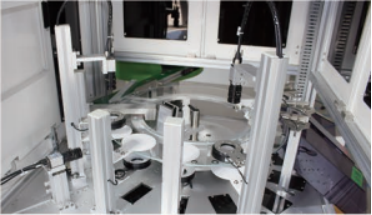transmission gasket seal
Understanding Transmission Gasket Seals Importance, Function, and Maintenance
Transmission systems in vehicles are complex assemblies that require precise engineering to ensure their proper function. One of the critical components of these systems is the transmission gasket seal. Although it may seem like a minor part, the gasket seal plays a vital role in maintaining the efficiency and reliability of a vehicle’s transmission.
What is a Transmission Gasket Seal?
A transmission gasket seal is designed to provide a tight seal between two surfaces within the transmission case, such as between the gearbox and the transmission housing. This seal helps prevent the leakage of transmission fluid, which is crucial for the smooth operation of the transmission. The quality of the seal can significantly affect the performance of the entire system; any compromise in the integrity of this seal can lead to severe issues, including fluid leaks, overheating, and ultimately, transmission failure.
Functions of the Transmission Gasket Seal
1. Fluid Retention The primary function of the gasket seal is to contain the transmission fluid within the system. Transmission fluid acts as both a lubricant and a coolant, ensuring that the moving parts of the transmission do not overheat or wear down prematurely.
2. Prevention of Contaminant Ingress A proper seal also prevents contaminants, such as dirt and debris, from entering the transmission system. Contaminants can accelerate wear on internal components and lead to costly repairs.
3. Pressure Maintenance The gasket seal helps maintain the necessary pressure within the transmission system. This pressure is essential for proper function, allowing the transmission to shift gears smoothly and efficiently.
Signs of a Failing Gasket Seal
Recognizing the symptoms of a failing transmission gasket seal is crucial for preventing further damage to the transmission system. Common signs include
transmission gasket seal

- Fluid Leaks Puddles of red or brown fluid under the vehicle can indicate that the gasket seal is malfunctioning. - Slipping Gears If the transmission is slipping or having trouble shifting, it may be due to insufficient fluid levels caused by a leak. - Overheating Excess heat may be a sign that the transmission fluid is low, often due to a compromised gasket seal. - Unusual Noises Grinding or whining sounds coming from the transmission can signal fluid inadequacy, potentially resulting from a failed seal.
Maintenance and Replacement
Maintaining the integrity of the transmission gasket seal is essential for the longevity of the vehicle’s transmission system. Here are some tips for maintenance
1. Regular Inspections Periodically check the transmission fluid level and look for signs of leaks. If you notice any issues, consult with a professional mechanic immediately.
2. Fluid Changes Following the vehicle manufacturer’s recommendations for fluid changes is crucial. Fresh transmission fluid can help to reduce the wear on the gasket seal and other components.
3. Quality Replacement Parts When the time comes to replace the gasket seal, opting for high-quality OEM (Original Equipment Manufacturer) parts is advisable. Cheaper alternatives may not provide the same level of durability and reliability.
4. Professional Help If you suspect a problem with the gasket seal, it’s best to consult a qualified mechanic. They can provide an accurate diagnosis and suggest the most appropriate solutions.
Conclusion
The transmission gasket seal may be a small part of the complex transmission system, but its significance cannot be overstated. Proper maintenance and timely replacement can prevent serious transmission issues, ensuring that your vehicle operates smoothly and reliably. By understanding the role of the gasket seal and staying vigilant for signs of failure, vehicle owners can protect their investment and enjoy a seamless driving experience.
-
TOYOTA Seal Type T Oil 9031147026 | Genuine OEM Quality
News Aug.31,2025
-
Engine Crankshaft Oil Seal 9031138096: Reliable Leak Protection
News Aug.30,2025
-
Cassette Seal: Integrated Solutions for Heavy Duty
News Aug.29,2025
-
Premium Automotive Oil Seals Suppliers | Durable & Precision
News Aug.28,2025
-
Oil Drain Plug Washer Reusable Types
News Aug.22,2025
-
Oil Drain Plug Replacement Guide
News Aug.22,2025
-
Heavy Duty Seal Waterproof Features
News Aug.22,2025
Products categories















